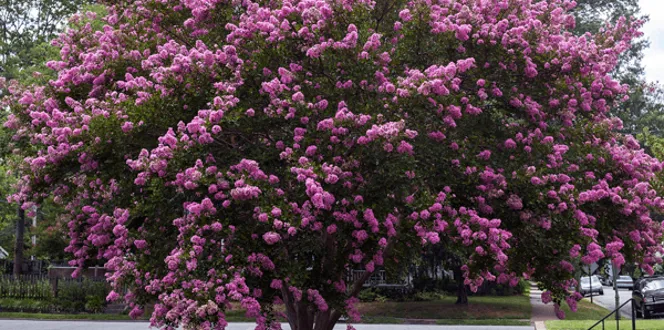Trees are so beneficial to your home landscape. They add shade, cool your yard when it’s hot and sunny out, and even block the wind in winter to keep your home warm. Trees are also beautiful additions to your property, adding flowers in spring, greenery in summer, show stopping fall color, and even winter interest.
This is why when you’re doing a construction project you want to do everything you can to protect your trees so they suffer no harm in the process.
Trees stand so strong that you might forget that they even need protection, but there are actually some common injuries that can happen, depending on the extent of your construction project. In fact, trees suffering from root damage that you may not even see happening can decline and even die several years after construction.
Let’s talk about tree preservation during construction and root protection tactics, so you can prevent tree injury when you are working on construction projects on your property.
Tree Protection During Construction
You might think trees are unaffected by construction projects, but it can actually be hard for trees to adapt to the sudden changes that can happen during these projects. Therefore, coming up with a tree preservation plan is the best way to avoid any damage.
The most obvious injuries to trees during construction usually happen to branches and trunks, but damage to tree roots can be the most troubling, limiting tree health and vitality and also potentially destabilizing them. This is because people don’t always understand where roots are located underground and how sensitive they can be to this construction activity.
To start, if you have sensitive species or young trees, you can put tree protection fencing around their critical root zones to ensure construction equipment stays at an adequate distance. This area inside the fence is the tree protection zone.
But, remember, you have to think about how far the roots extend to truly protect the bulk of tree roots. The critical root zone often extends further than the branches or even to a radius of fifteen times the stem’s diameter. Here are some other tasks to focus on when it comes to tree root protection during construction.
Root Pruning
Tree roots can be damaged during construction projects through compaction from equipment, grade changes, or even by being cut through excavation or digging trenches.
Your tree’s roots can extend as far as two to three times the width of its drip line – or the farthest point where the tree’s branches are growing. If you look at the tree’s crown and drop an imaginary line down to the ground, this can give you a rough idea of how to locate its drip line.
To protect roots from unnecessary damage when they have to be cut in order to dig, tree protection during construction may include carefully digging with supersonic air tools followed by careful hand pruning of roots. This would be done by a certified arborist to ensure roots are cared for properly and tree stability and health remain intact.
Root Protection Matting & Root Aeration Matting
The goal of tree root protection during construction is to ensure upwards of 70 percent of a tree’s root zone is not impacted. This is because root loss cuts down the tree’s supply of water and nutrients. The best way to do this is to avoid doing any work or stacking heavy materials like lumber within the tree protection zone.
By changing the grade around tree roots and removing soil or dumping additional soil on top, you also undermine part of the tree’s anchors – its roots – by removing them or smothering them.
Using tree protection fencing to keep workers and equipment away from tree root zones will help, as well as laying down plywood or other root protection matting to limit soil compaction where work with equipment is necessary in root zones outside of the tree protection fencing. Root aeration matting under protection matting can also be used to maintain air and water movement through soil while root protection matting is in place.
How to Care For Trees After Construction
Once construction is finished, providing your trees with some TLC can help them bounce back from any resulting stress.
Here are some tips that can help as part of your tree preservation plans:
- Water trees properly, especially during dry periods. The amount of water will vary based on tree age and rain or heat levels in your region.
- Use proper pruning techniques to remove dead or dying branches.
- Watch and treat for decline, pests, and diseases that may result if your tree is stressed out after construction.
- Renovate damaged soil with organic matter and air tools, replenish any lost soil, and add a 2-inch layer of wood chip mulch to promote tree roots.
- Schedule regular tree inspections with a certified arborist.
If tree injury does occur, you want to call your certified arborist quickly to assess and treat damage.







